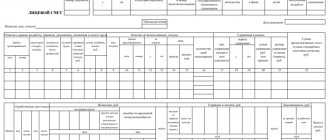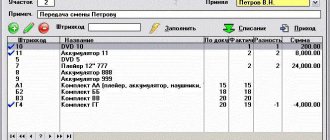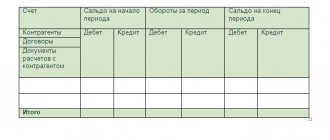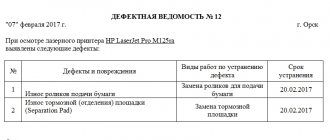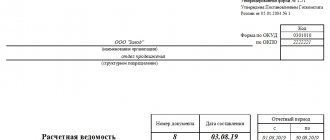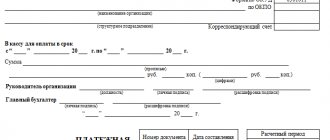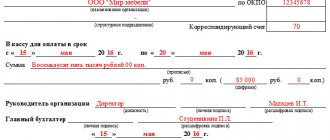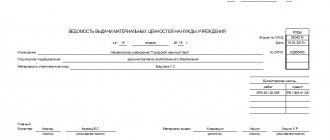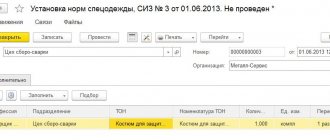The balance sheet is one of the main and most important purely accounting documents, which is essentially a report on the movement of financial resources in the accounts of the enterprise, as well as balances on them at the beginning and end of a certain period. It is the basis for drawing up a balance sheet and is a form that contains data on the debit and credit of each subaccount, their intermediate and final indicators. Experts consider it as the last link in the chain of preparation for tax and financial reporting.
It is worth noting that not all enterprises use balance sheets in their activities, but if this document is included in the company’s document flow, then it must be approved in its accounting policy.
- Form and sample
- Online viewing
- Free download
- Safely
FILES
Basic rules for drawing up a balance sheet
Today, there is no standardized, obligatory sample of this document, so it can be drawn up in free form or using special templates. Sometimes companies develop their own statement forms (based on their own needs) and subsequently print them in a printing house.
At first glance, the balance sheet may seem like a simple set of numbers divided into different columns. However, in fact, it is a clearly structured summary table into which information is entered on various transfers, economic and financial operations of the enterprise, including such as writing off production costs, calculating taxes, calculating depreciation, generating reports, etc. .
The document always indicates
- name of the enterprise or organization,
- whose accounting department generates the document,
- account numbers (sometimes with their decoding),
- specific amounts.
An important condition: if compiled correctly, the final numbers in all columns of the statement must match.
The balance sheet belongs to the category of regular documents and is compiled, as a rule, once a month in a single copy.
It is not necessary to sign the document, but if necessary, it must be certified by the employee who was involved in its preparation or verification (for example, the chief accountant). Likewise, there is no need to put a stamp on the document.
Balance sheets, like any other accounting documents, must be kept for at least five years.
3.6. Turnover sheet
At the end of each month, generalized data on individual types of economic assets, their sources, and individual economic processes are recorded on the accounting accounts. Such information is necessary for reporting, monitoring the implementation of planned targets and operational management of the organization’s economic activities. Current accounting data reflected in the accounting accounts must be reliable.
In order to monitor the completeness and correctness of entries in the accounting accounts, turnover sheets are compiled. They are used to summarize current accounting data and obtain information about all assets of an enterprise or individual groups of them. Turnover statements are compiled in the form of tables separately for synthetic and analytical accounts.
Example
As of January 1, the organization has the following balances of economic assets and sources:
| Account number | Assets | Amount, thousand rubles | Account number | Own capital and liabilities | Amount, thousand ru6. |
| Materials | 20 000 | Settlements with suppliers and contractors | 20 000 | ||
| Cash register | 1 000 | Calculations for taxes and fees | 1 000 | ||
| Current accounts | 80 000 | Payments to personnel regarding wages | 30 000 | ||
| Authorized capital | 40 000 | ||||
| Gains and losses (profit) | 10 000 | ||||
| Balance | 101 000 | Balance | 101 000 |
During the month, business transactions were carried out and entered into the Business Transactions Register for January.
| No. | Corresponding accounts | Amount, thousand rubles | ||||
| Debit | Credit | |||||
| Money for business expenses was received from the current account to the cash register | 1 000 | |||||
| Income tax withheld from wages | 3 000 | |||||
| Materials have been received from the supplier (no payment has been made) | 30 000 | |||||
| Debt on taxes and fees was transferred from the current account | 4 000 | |||||
| Total: | 38 000 | |||||
Business transactions are reflected in the accounting accounts in the following order.
- It is necessary to open accounting accounts.
- According to the initial balance sheet data, indicate the initial balances of business assets and sources.
- Reflect business transactions on accounting accounts.
- Calculate the debit and credit turnover of each account.
- Determine the final balances of household assets and sources.
Prepare a turnover sheet.
Sample of filling out the balance sheet
First of all, the statement must indicate the name of the enterprise for which it is being made. Next, enter the name of the document and the specific account for which it is drawn up. In this example, this is an account under code 60, which stands for “Settlements with contractors and suppliers.”
The algorithm for making entries in this sample balance sheet is not very complicated and is made in a certain order, based on the sequence of financial and economic actions performed.
EXAMPLE. Let's assume that the company transferred an advance payment in the amount of 100 thousand rubles to the counterparty. This operation was reflected in the document as an increase in receivable assets in the subaccount (line 60.1). Next, the counterparty provided the company with inventory in the amount of 150 thousand rubles. This operation is entered into the table as an increase in credit liability in subaccount 60.2. Then the enterprise pays the counterparty a partial cost of the goods and this is reflected in the statement as a decrease in liabilities by 100 thousand rubles in subaccounts 60.2 (in debit) and as a decrease in assets in subaccounts 60.1 (in credit). Thus, as a result, the enterprise owes the counterparty 50 thousand rubles during the period of drawing up the document, which is reflected in subaccounts 60.2 (on credit). Line 60 indicates the final total amounts.
Turnover sheet for synthetic account 71: formation features
Let’s assume that an employee of an organization, Ivanov, received cash from his employer in the amount of 10,000 rubles. for household needs, and his colleague Petrov - travel allowances in the amount of 20,000 rubles.
A week later, Ivanov reported on the use of funds, providing an advance report with supporting documents in the amount of 9,000 rubles. Petrov brought the employer a similar set worth 19,000 rubles.
Read about the features of preparing an advance report here.
What will the turnover sheet look like for account 71, reflecting these business transactions?
The turnover sheet is a table, the columns of which have the following names:
| Account (sub-account) / Analytical characteristics of a sub-account | Balance at the beginning of the period | Period transactions | balance at the end of period | |||
| Debit | Credit | Debit | Credit | Debit | Credit | |
In the first column of the turnover sheet, the following is recorded:
- synthetic account;
- the subaccount in which transactions are recorded, if it is entered into the applicable chart of accounts (in our case, it is entered and has the designation 71.01);
- analytical characteristics of this subaccount (can be anything; for 71 accounts these are the names of the employees to whom cash is issued).
Filling out the columns of the turnover sheet occurs on the basis of data from primary accounting documents according to the accounting entries corresponding to these documents. If accounting is carried out manually, then each of the transactions recorded in accounting is entered into the turnover sheet in chronological order. In accounting programs, this register is generated automatically.
ConsultantPlus experts explained which accounts should be used in accounting and how to properly conduct analytical accounting:
If you do not have access to the K+ system, get a trial online access for free.
Why do we need regulation of the document flow of an enterprise?
The economic life of a company consists of a sequence of actions that are recorded in a journal (book). The form of the journal is established by the enterprise independently (Part 5, Article 10 of the Federal Law of December 6, 2011 N 402-FZ). Each transaction is recorded by accounting entries using the chart of accounts (Order of the Ministry of Finance N94n dated October 31, 2000).
Entries are reflected in two accounts. The number on the left is a debit (D), and the number on the right is a credit (K). The “primary” items are entered into the journal: invoices, forms of completed work, receipts, invoices, and so on. The enterprise establishes the principles and procedure for recording transactions in its accounting policy (Parts 5, 6, Article 10 of Federal Law N 402-F3 06.11.2011).
Results
The balance sheet is an accounting register, which is an element of the system for collecting and processing information. As a rule, the form is filled out automatically in accounting systems. Using the statement for tax calculation purposes is possible only in special cases. When carrying out transactions that entail different accounting procedures, there is a need to adjust or prepare a new register for tax purposes.
Sources: Order of the Ministry of Finance of Russia dated December 28, 2001 N 119n
You can find more complete information on the topic in ConsultantPlus. Free trial access to the system for 2 days.
Form requirements
This document has some requirements that must be adhered to during registration. There are not many of them, so a competent accountant will be able to cope with the task. So, what are the requirements for SALT?
- The informative component of this document must necessarily consist of such items as the turnover carried out on the account for the entire month, how much money is left in this account at the beginning and end of the month, a breakdown of the accounts indicated in the SALT, as well as the number of the specified account.
- Each type of statement has its own meanings, characteristics and features. Therefore, during its execution, you need to know that the document will be correctly drawn up only if it contains three equalities.
- The total amount of funds in debit at the beginning of the month must fully correspond to the credit, the report of which also falls on the beginning of the month. Basically, this rule applies because the funds that belong to the company are both a source for formation and assets.
- In relation to those turnovers that relate to debit, the rule according to which they must be equal to credit also applies. Here equality will be achieved through double entry. For example, wages paid to employees may become both a debt owed to the employees and a cost incurred by the organization.
- Another equality is that the amount of assets that belong to a company must be equal to the amount of its liabilities. Here, as in the example above, the double entry rule works.
- SALT, drawn up according to analytical accounts, makes it possible to obtain the most complete information - including the quantity of goods, types of counterparties, as well as the availability of assortment.
- The chess OCB is drawn up specifically to take into account credit and debit turnover. The double entry rule means that a company's assets simultaneously become its liabilities to counterparties.
[docs]
The main thing when preparing such a statement is the coincidence of the turnover values, which will indicate that the results are indeed calculated correctly, and the data in business transactions is entered correctly. After reconciliation, you can proceed to filling out the accounting records.
Another example of filling out the SALT is presented below.
about the author
Grigory Znayko Journalist, entrepreneur. I run my own business and know first-hand the problems and difficulties that individual entrepreneurs and LLCs face.
Filling example
During the current period the following transactions were performed:
- Payment received from the buyer (D51 K62) – 20,000
- Sales of goods to the buyer (D62 K41) – 15000
- Wages transferred to employees (D70 K51) – 5000
Analytics analysis - SALT for a separately selected account. Allows you to more deeply study movements in certain operations, for example, wages.
Form of balance sheet for account 70:
Attention! When analyzing analytical accounts, equality between turnovers is not necessary.
The chess sheet is a type of synthetic accounting, filled out according to the business transactions log. Checkerboard is a table that displays debited accounts vertically and credited ones horizontally. After filling out the statement, you need to calculate the total amount, which must be the same for any calculation.
How to compose
There are three types of documents, differing in the type of preparation:
- Compiled according to analytical accounts.
- Statements filled out based on the sum of the values displayed in synthetic accounts.
- Combined type statements compiled according to the two types of statements indicated above.
Completing the first type of document may vary significantly in different organizations. What exactly will a classic SALT document on analytical accounts look like? A regular document drawn up for a passive or active account usually consists of several points:
- The name of the account in question.
- The balance that accounts for credit and debit at the beginning of the month.
- Turnovers carried out on the same credit and debit throughout the entire month.
- Balance at the end of the month.
Depending on which account is displayed in the document, passive or active, an increase in the amount in the Debit section and a decrease in the Credit section are additionally indicated if we are talking about active accounts, or vice versa, if a passive account is issued.
